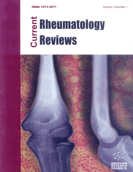Abstract
Background: Immune dysregulation plays an important role in the pathogenesis of rheumatoid arthritis (RA). The CD4+CD25 high FoxP3+ subset of regulatory T cells plays an essential role in preventing autoimmunity and maintaining immune homeostasis. Negative regulation of JAK/STAT signaling is controlled by Suppressor of Cytokine Signaling (SOCs3) proteins. SOCs is produced at lower levels in RA. Our aim was to evaluate the expressional dysregulation of SOCs3 and FoxP3 genes in RA patients in relation to disease activity.
Methods: We have recruited 90 patients with RA and 60 healthy controls in case control study. Whole blood samples were collected from RA patients and healthy subjects. The measurement of FoxP3 and SOCs3 gene expression was performed by real-time PCR (qPCR).
Results: Patients with RA had significantly decreased expression levels of FoxP3 and SOCs3 genes in comparison with controls (P<0.001), in addition to the insignificance correlation of both genes with disease activity in RA patients.
Conclusion: FoxP3 and SOCs3 genes showed significant defects in rheumatoid arthritis patients with no significant difference in disease activity.
Keywords: 35366780
[http://dx.doi.org/10.1093/rheumatology/kep392] [PMID: 19955223]
[http://dx.doi.org/10.1016/j.immuni.2017.02.006] [PMID: 28228278]
[http://dx.doi.org/10.1007/s10753-016-0470-8] [PMID: 27882473]
[http://dx.doi.org/10.1093/rheumatology/keu487] [PMID: 25667434]
[http://dx.doi.org/10.1038/cmi.2015.65] [PMID: 26277895]
[http://dx.doi.org/10.1007/s10753-017-0577-6] [PMID: 28478516]
[http://dx.doi.org/10.1016/j.bcp.2005.04.042] [PMID: 15936728]
[http://dx.doi.org/10.1016/S1074-7613(00)80505-1] [PMID: 9252115]
[http://dx.doi.org/10.1038/nri818] [PMID: 12093007]
[http://dx.doi.org/10.1038/ni1012] [PMID: 14639467]
[http://dx.doi.org/10.1172/JCI25660] [PMID: 16710471]
[http://dx.doi.org/10.1136/ard.2011.154815] [PMID: 21873688]
[http://dx.doi.org/10.1002/art.37786] [PMID: 23203851]
[http://dx.doi.org/10.1093/rheumatology/kem198]
[http://dx.doi.org/10.1002/art.27584] [PMID: 20872595]
[http://dx.doi.org/10.1002/art.11063] [PMID: 12746920]
[http://dx.doi.org/10.12659/MSM.902454] [PMID: 28282368]
[http://dx.doi.org/10.1073/pnas.0509484103] [PMID: 16617117]
[http://dx.doi.org/10.1038/sj.mt.6300341] [PMID: 17984976]
[http://dx.doi.org/10.1016/j.jaut.2019.02.007] [PMID: 30954385]
[http://dx.doi.org/10.1002/art.20499] [PMID: 15457445]
[http://dx.doi.org/10.3109/08916930903061491] [PMID: 19886735]
[http://dx.doi.org/10.1080/08820139.2018.1480029] [PMID: 29851536]
[PMID: 31217874]
[http://dx.doi.org/10.1016/j.imlet.2018.10.001] [PMID: 30292536]
[http://dx.doi.org/10.3899/jrheum.131381] [PMID: 25448791]
[http://dx.doi.org/10.1007/s10875-011-9559-x] [PMID: 21732015]
[http://dx.doi.org/10.1093/rheumatology/kel089] [PMID: 16571607]
[http://dx.doi.org/10.1002/art.39408] [PMID: 26314565]
[http://dx.doi.org/10.1038/nm.3085] [PMID: 23396208]
[http://dx.doi.org/10.1111/1756-185X.12211] [PMID: 24618356]
[http://dx.doi.org/10.1186/ar1445] [PMID: 15535835]
[http://dx.doi.org/10.1186/ar1883] [PMID: 16507131]












